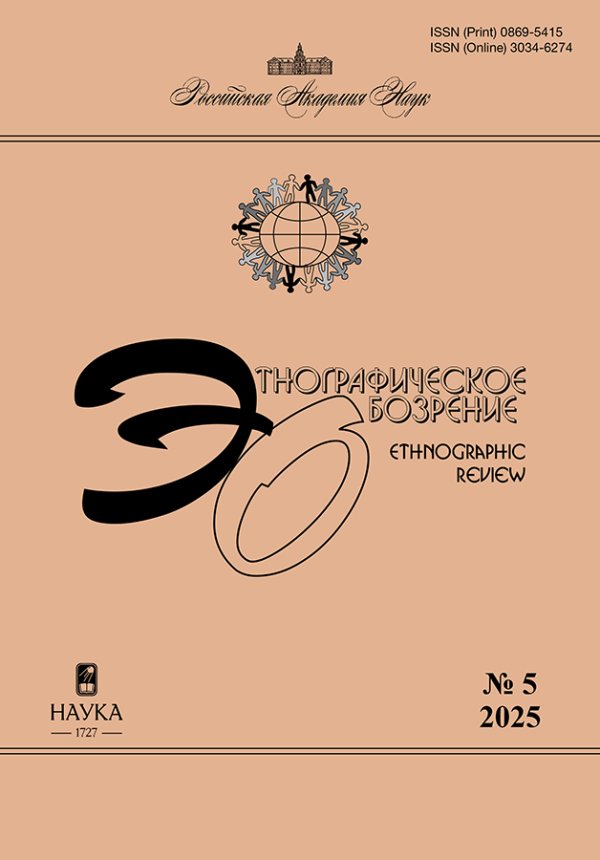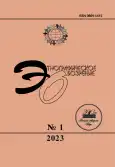Formation of the “chinese” segment among the uyghurs of Kazakhstan in the context of the adaptation of immigrants from China to the USSR in the 1950-1960s
- Authors: Karimova R.-.1
-
Affiliations:
- The R.B. Suleimenov Institute of Oriental Studies
- Issue: No 1 (2023)
- Pages: 123-140
- Section: Articles
- URL: https://journals.rcsi.science/0869-5415/article/view/144860
- DOI: https://doi.org/10.31857/S0869541523010086
- EDN: https://elibrary.ru/PMWDHY
- ID: 144860
Cite item
Full Text
Abstract
Keywords
About the authors
R. -B.U Karimova
The R.B. Suleimenov Institute of Oriental Studies
Email: risalat.karimova@mail.ru
Almaty, Republic of Kazakhstan
References
- Аблажей Н.Н. Масштабы и последствия возвратной миграции из Китая в СССР // Сибирское общество в контексте модернизации XVIII-XX вв. Сборник материалов конференции (22-23 сентября 2003 г., Новосибирск) / Отв. ред. В.А. Ламин. Новосибирск: НГУ, 2003. С. 167-175.
- Воскресенский А.Д. Дипломатическая история русско-китайского Санкт-Петербургского договора 1881 года. М.: Памятники исторической мысли, 1995.
- Исиев Д.А. Уйгурское государство Йэттишар. М.: Наука, 1981.
- Кадыров А.Н. Уйгурский советский театр. Алма-Ата: Онер, 1984.
- Камалов А.К. Уйгуры Казахстана. Астана: Академия государственного управления при Президенте РК, 2016.
- Скачков П.Е., Мясников В.С. (сост.) Русско-китайские отношения, 1689-1916: официальные документы. М.: Восточная литература, 1958.
- Селицкий И.В. Кульджинские переселенцы пограничной с Китаем полосы // Известия общества археологии, истории и этнографии при Императорском Казанском университете. 1904. Т. ХХ. Вып. 6.
- Федоров Д. Опыт военно-статистического описания Илийского края. Ч. II. Ташкент: Издание Штаба ТуркВО, 1903.
- Ходжаев А. Захват цинским Китаем Джунгарии и Восточного Туркестана. Борьба против завоевателей // Китай и соседи в новое и новейшее время / Отв. ред. С.Л. Тихвинский. М.: Наука, 1982. C. 153-195.
- Clark W., Kamalov A. Uighur Migration across Central Asian Frontiers // Central Asian Survey. 2004. Vol. 23. No. 2. P. 167-182.
- Harris R., Kamalov A. Nation, Religion and Social Heat: Heritaging Uyghur Mäshräp in Kazakhstan // Central Asian Survey. 2021. Vol. 40. No. 1. P. 9-33. https://doi.org/10.1080/02634937.2020.1835825
- Hsü I. The Ili Crisis: A Study of Sino-Russian Diplomacy, 1871-1881. Oxford: Clarendon Press, 1965.
- Kamalov A. Birth of Uyghur National History in Semirech'ye // Oriente Moderno. 2016. Vol. 96. No. 1. P. 181-196. https://doi.org/10.1163/22138617-12340099
- Kamalov A. Identity of Kazakhstan's Uyghurs: Migration, Homeland, and Language // Central Asian Affairs. 2021. Vol. 8. No. 4. Р. 319-345. https://doi.org/10.30965/22142290-12340011
- Karimova R.U. On the History of Cultural Traditions Transformation: Arts and Crafts of Kazakhstani Uighurs // Oriente Moderno. 2016. No. 96 (1). P. 3-24. https://doi.org/10.1163/22138617-12340092
- Kim H. Holy War in China: The Muslim Rebellion and State in Chinese Central Asia, 1864-1877. Stanford: Stanford University Press, 2004.
- Perdue P. China Marches West: The Qing Conquest of Central Eurasia. Cambridge: Harvard University Press, 2005.
- Roberts S. The Uighurs of the Kazakstan Borderlands: Migration and the Nation // Nationalities Papers: The Journal of Nationalism and Ethnicity. 1998. Vol. 26. No. 3. P. 511-530.
Supplementary files










